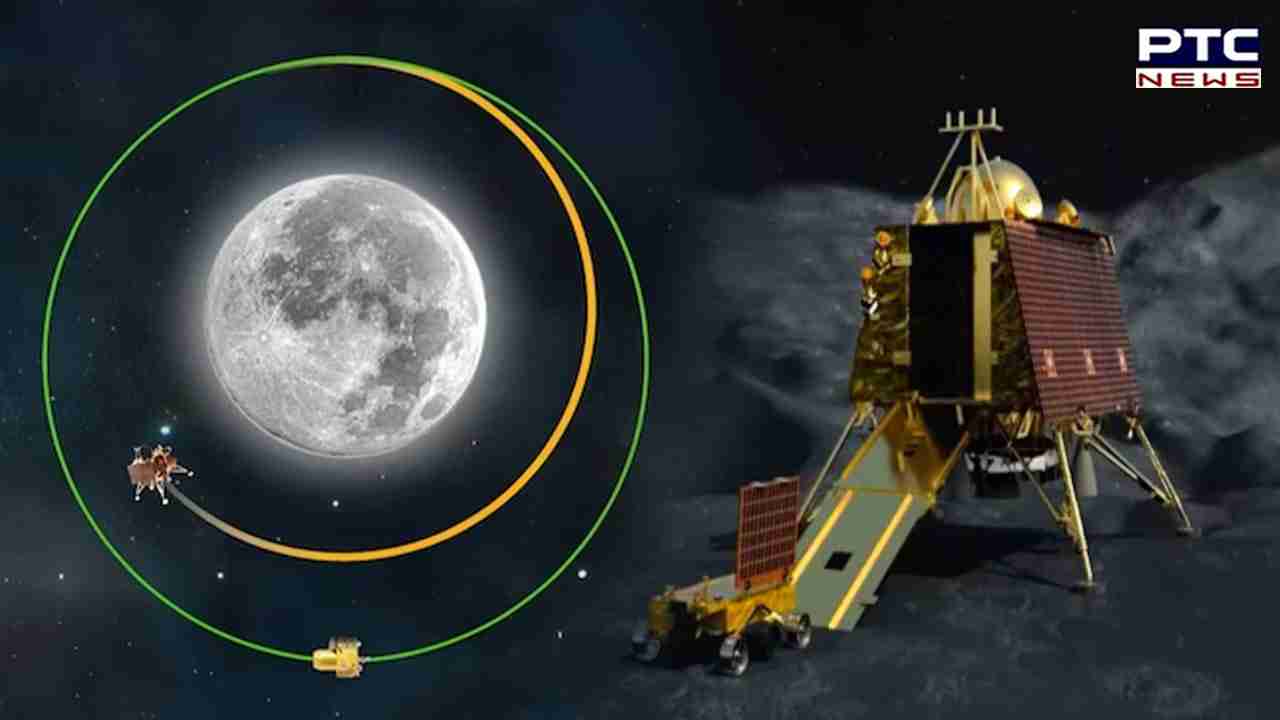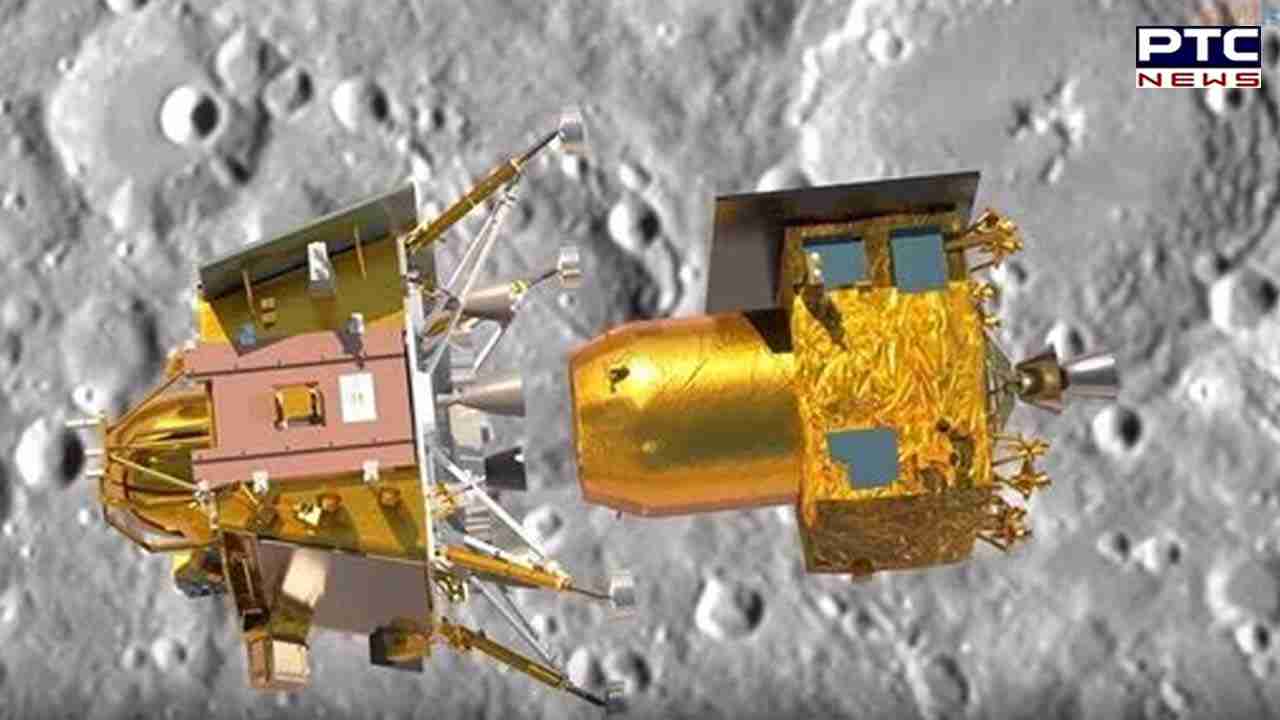

Chandrayaan-3's 'Vikram' lander achieves successful first deboosting, progressing towards moon
Chandrayaan-3: In a significant stride towards its imminent lunar landing, Chandrayaan-3's Vikram Lander achieved a pivotal deboosting maneuver, lowering its orbit slightly, on Friday. This maneuver followed its successful separation from the propulsion module the previous day. Scheduled around 1600 IST, the deboosting operation effectively positioned the lander in an orbit characterised by a Perilune (closest point to the Moon) of 30 km and an Apolune (farthest point) of 100 km.

ISRO shared the news through a tweet, affirming the Lander Module's health and outlining the maneuver's success. Further details were provided by ISRO, disclosing the intention of a second deboosting operation on August 20, 2023, around 0200 Hrs. IST.
#WATCH | The Moon as captured by Lander Imager Camera soon after the Lander module separated from the Propulsion Module on Chandrayaan-3 mission
(Video source: ISRO) pic.twitter.com/k4SwMCBpp0 — ANI (@ANI) August 18, 2023
Deboosting, integral to the lander's trajectory control, entails deceleration to establish an orbit aligned with the mission's requirements.
Chandrayaan-3's journey carries the namesake of Vikram Sarabhai (1919–1971), an instrumental figure in shaping India's space endeavors. The spacecraft recently completed its final lunar-bound orbit reduction maneuver ahead of its anticipated landing on the moon's south pole on August 23.
The Lander Module (LM) health is normal. LM successfully underwent a deboosting operation that reduced its orbit to 113 km x 157 km. The second deboosting operation is scheduled for August 20, 2023, around 0200 Hrs. IST: ISRO
(Source: ISRO) pic.twitter.com/QVy4fgdVvZ — ANI (@ANI) August 18, 2023
The mission's trajectory, involving the deployment of a GSLV Mark 3 (LVM 3) heavy-lift launch vehicle, commenced with its placement into lunar orbit on August 5. The subsequent weeks have seen the spacecraft navigate a series of precisely orchestrated orbital adjustments.
#WATCH | The Moon as seen by Lander Position Detection Camera (LPDC) onboard Chandrayaan-3 on 15th August
(Video source: ISRO) pic.twitter.com/T1VgyrDuTf — ANI (@ANI) August 18, 2023
Chandrayaan-3's objectives encompass a safe and gentle landing, the deployment of a rover for surface exploration, and on-site scientific investigations. The development phase, initiated in January 2020 with a planned 2021 launch, encountered setbacks due to the COVID-19 pandemic.
This mission follows Chandrayaan-2, which encountered challenges during its soft landing attempt in 2019, leading to an evaluation that it didn't fulfill its core mission objectives.
Chandrayaan-3: Taking another step closer to Moon, ‘Vikram’ lander undergoes first successful deboosting
Read @ANI Story | https://t.co/SRKla6oCg2#Chandrayaan3 #Chandrayaan #ISRO #Moon #LunarMission #VikramLander #LanderModule #PropulsionModule #Deboosting pic.twitter.com/ExnnVk7cME — ANI Digital (@ani_digital) August 18, 2023
Chandrayaan-3: Upclose images of moon as captured by Vikram lander
Read @ANI Story | https://t.co/VUqTriCIqA#Chandrayaan3 #Chandrayaan #ISRO #Moon #LunarMission #VikramLander #LanderModule #PropulsionModule pic.twitter.com/kD4ieWGldR — ANI Digital (@ani_digital) August 18, 2023
ISRO Chairman S Somanath expressed confidence in Chandrayaan-3's progress, assuring that all systems are operating as intended. He emphasised, "Everything is going fine now. There will be a series of maneuvers until it lands (on the Moon) on 23rd August. The satellite is healthy."
As India pursues a successful lunar landing, it seeks to join the ranks of countries like the United States, Russia, and China. The moon's mysteries hold insights into Earth's past, and a triumphant mission could augment our understanding of the solar system and beyond. While lunar missions historically focused on equatorial regions, the challenging terrain of the lunar south pole presents a distinct opportunity for exploration.
Also Read: #WATCH | The Moon as captured by Lander Imager Camera soon after the Lander module separated from the Propulsion Module on Chandrayaan-3 mission
(Video source: ISRO) pic.twitter.com/k4SwMCBpp0 — ANI (@ANI) August 18, 2023 " target="_blank">Onion prices soar; witness 60% surge in just one week; check rates
- ANI
